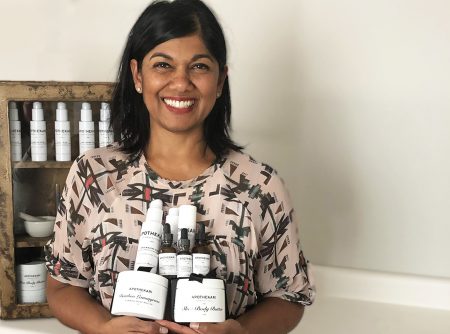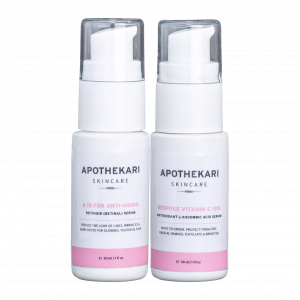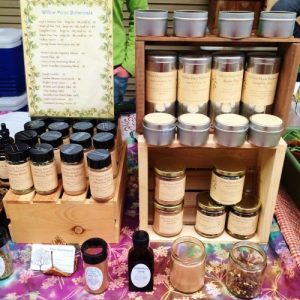If you’re wondering how to choose a moisturizer that’s right for you, you’re not alone. Moisturizers seem to be the number one requested product when we feel that something is wrong with our skin and in an earlier post I questioned whether or not you even need one. If you do, there are 5 questions to ask before you choose a moisturizer.
What is a Moisturizer?
Moisturizer is a broad term used to describe products that we use to make our skin feel more comfortable and lubricated (not dry). They range from very light products like serums and lotions to heavier and more occlusive ones like petroleum jelly. Water itself can moisturize skin but it evaporates very quickly.
On the other end of the spectrum, petroleum jelly also moisturizes, but it is sticky and greasy unpleasant to use on a regular basis. An ideal moisturizer for most of us falls somewhere in between the two, containing some water with a heavier, occlusive substance to help lock it all in.
Moisturizers are made up of 3 main types ingredients:
- Humectants. Attract water to the skin by grabbing it from the environment. Can also pull water from deep in the skin (dermis) to the surface layers (epidermis). Examples include honey, propylene glycol, propanediol, hyaluronic acid (sodium hyaluronate), glycerin, ethylene glycol.
- Emollients. Help to fill in the gaps in skin leaving it feeling softer and smoother. They may also help to lock in moisture. Includes lipids (fats) and oils such as jojoba oil, castor oil, vitamin E and cholesterol and some silicones as well. Emollients may also work as occlusives.
- Occlusives. Help to lock in water by forming a thin, oily layer over the skin. They work best when applied to damp skin. Examples include petroleum jelly, lanolin, mineral oil, silicones, beeswax, cholesterol and fatty alcohols including cetyl alcohol and stearyl alcohol. Many occlusives are also emollients.
We’re big fans of Apothekari Daily Infusion Moisturizer , which contains a good balance of humectants (glycerin), emollients (caprylic/capric triglyceride, coco-caprylate/caprate, squalane) and occlusives (cetearyl alcohol, cetearyl glucoside, glyceryl stearate) and which is suitable for all skin types.
How To Choose a Moisturizer
Your choice of moisturizer depends on your skin type and the time of year. You may not require a moisturizer during the summer months, when traveling to tropical locations or when the humidity is high. However, when you travel away from home, the weather changes and/or the humidity drops, you may need to reassess your routine. Skin changes due to a number of factors so a routine that always used to work for you may need to be revisited every now and again.
Here are 5 questions to ask before you choose a moisturizer that is best for your skin.
- What is Your Skin Type? Dry skin requires a moisturizer with more emollients and occlusive ingredients to help block water evaporation. Oily skin often does well with water-based products containing a lot of humectants (like a hyaluronic acid serum) or may be able to forgo a moisturizer altogether.
- Is Your Skin Dry or Dehydrated? Dry skin is skin that is lacking in oils while dehydrated skin is skin that it is lacking in water. Dry skin feels rough and appears dry and flaky. Dehydrated skin looks dull and feels tight and rough. It may show fine lines, sagging and wrinkles. Both oily and dry skin can be dehydrated, meaning that it is lacking in water or moisture. Dehydrated skin benefits from humectants to help hydrate and plump. Ingredients including glycerin, sodium hyaluronate and propanediol work well.
- What Time of Year is it? If temperatures have dropped and the air is drier (like now) or if you’ve traveled somewhere where that’s the case, you may need to introduce a moisturizer if you aren’t currently using one. Or, you may need to switch to one that contains more emollient and occlusive ingredients. Conversely, if it’s getting warmer and there’s more moisture in the air, you may need to swap out your heavier moisturizer for one that is lighter (more humectants and fewer emollient or occlusives). If you’re spending more time outdoors, consider that the sun’s UVA rays can lead to dehydrated skin so ensure that you are wearing a sunscreen and consider upping the moisturizer.
- Has Your Skin Experienced Age Related Changes? Our skin may become oilier as we enter adolescence. As we approach our twenties, it becomes drier. The hormonal changes that women experience as they age can lead to further dryness so it’s important to acknowledge that you may require a different moisturizer as you get older.
- What Type of Moisturizer Do You Like? Sometimes finding the right product can take a bit of trial and error. If you’re not happy with how your moisturizer feels on your skin, it may not be a good match. Shop around and test products until you find one that you enjoy using.
Once you’ve found a moisturizer that works for you, keep the following in mind:
- Apply over damp skin to lock in moisture.
- Moisturize as often as you need to.
- Use SPF daily to help combat dryness and skin damage.
Did this post help you with how to choose a moisturizer?







